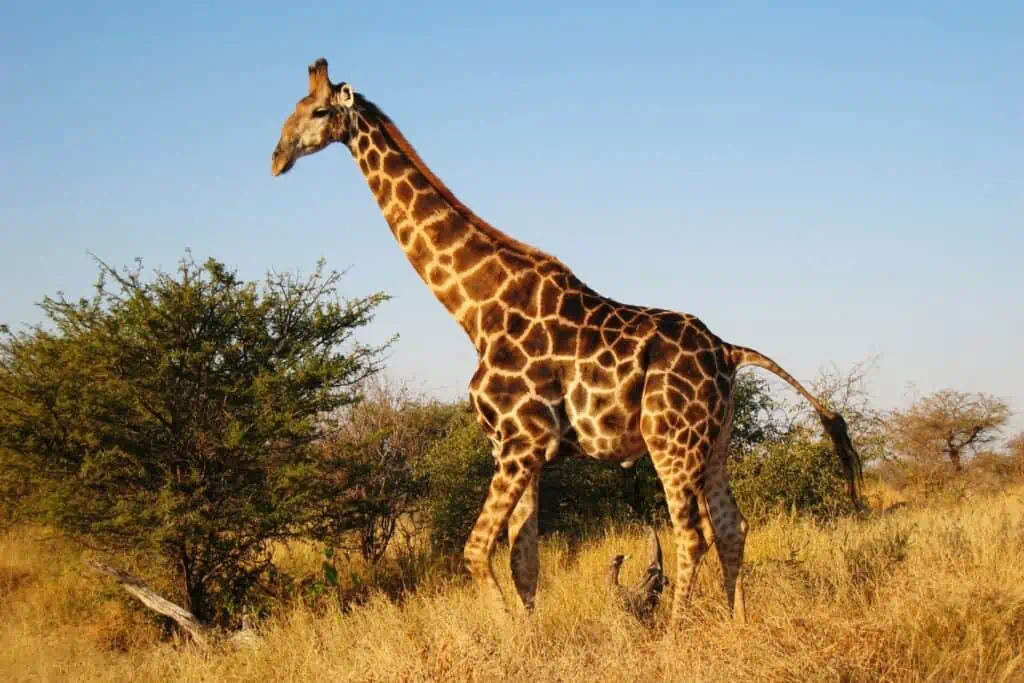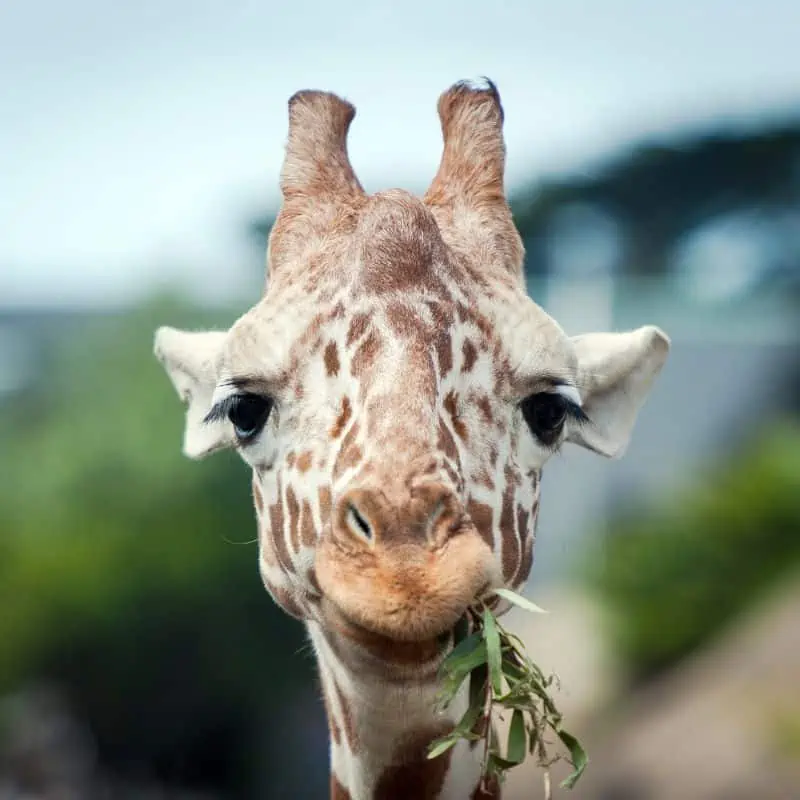Seeing a giraffe’s striking appearance can leave you with many questions, like where do giraffes live? These giant animals are often seen on safaris and in zoos, but where do they come from, and what do they need to thrive?
Giraffes generally live in the savannah woodlands and the semi-arid savanna of Africa. They can be found in open grasslands in East Africa and southern Africa, and they used to be found in North and West Africa. Sadly, today, they are usually only seen in the sub-Saharan regions.
In this article, we’re going to explore where you can find giraffes in the wild and the habitat they need to survive.

Where do giraffes live?
As mentioned, giraffes are found in the sub-Saharan parts of Africa.
The IUCN recognizes the giraffe as one species with nine subspecies, but a 2020 genome study showed four distinctive species with seven subspecies. However we classify them, each has a geographic range that is commonly found within.
You can find wild giraffes in any of the following countries:
- Somalia
- Ethiopia
- Southern Sudan
- Kenya
- Niger
- Mozambique
- Chad
- Botswana
- Zimbabwe
- Uganda
- Namibia
- Zambia
- Cameroon
- Central African Republic
- South Africa
The giraffe is an adaptable mammal, and the places listed have varying conditions, but they’re all suitable habitats for the giraffe.
Giraffes are also resilient against natural predators, meaning that it’s easier for them to spread into new environments and colonize areas where they were not previously found.
Their widespread nature may have contributed to their rise in popularity as they’ve become a well-known animal in western society.
Many giraffe species and subspecies are found in multiple countries, such as the reticulated giraffe, which is seen in Ethiopia, Kenya, and Somalia – although it is highly threatened.
What Habitat Do Giraffes Need?
Giraffes can be found in many habitats as long as they can get enough food. Most people think of them as inhabiting savannahs, but they are also present in open woodland and grassland in many countries.
Giraffes predominantly feed on acacia trees, so these need to be available in sufficient quantities for the giraffe to find food. The giraffe’s mouth and tongue are particularly leathery and hardy, allowing them to strip foliage off these trees without damaging their skin on the tree’s sharp thorns.
Giraffes feed on other plant matter too. They are browsers, and they will eat a wide variety of foods, including wild fruits such as apricots, flowers, flower buds, fresh grass, seeds, and more.
They don’t drink much fresh water, as they choose moisture-rich foods, but having access to a natural water source is still critical to their habitat.
In general, giraffes that are found in dense woodland are more likely to be males than females. Females tend to stay in more open areas, browsing on low growth, while males feed at height and don’t mind denser foliage.
This is not a hard rule, but it makes it easier to identify between the sexes at a glance.
What Countries Are Giraffes Native To?
Giraffes evolved in Africa, and they are likely native to many of the countries within this continent.
It is not known precisely which countries were native to giraffes, but below are some examples that will tell you where the different subspecies came from and where they are often found.
Reticulated Giraffe: The reticulated giraffe has no subspecies and is native to southern Ethiopia, Somalia, and northeastern Kenya. It has a distinctive coat pattern that makes it easy to identify. It is also known as the Somali giraffe.

Masai Giraffe: The Masai giraffe has two subspecies, the “Masai giraffe sensu stricto” and Thornicroft’s giraffe. The first subspecies is found in southern and central Kenya and Tanzania, while Thornicroft’s giraffe is only found in Luangwa Valley, in Zambia.
Southern Giraffe: The southern giraffe comprises two subspecies as well, the Angolan giraffe and the South African giraffe. You can find these giraffes in southern Botswana, southwestern Mozambique, southern Zimbabwe, and northern South Africa.
Northern Giraffe: The northern giraffe has three subspecies, the West African giraffe, the Kordofan giraffe, and the Nubian giraffe (with the Rothschild’s giraffe falling into this subspecies). West African giraffes can be seen in southwestern Niger. The Nubian giraffe is mainly in the eastern parts of South Sudan, Uganda, Kenya, and southwestern Ethiopia.
While the Kordofan giraffe can be seen in northeastern Congo, northern Cameroon, southern Chad, and the Central African Republic.
What animals are related to giraffes?
Surprisingly, the closest living relative to the giraffe is the Okapi.
The Okapi is rare and extremely shy, so they are not often seen. They also do not look much like giraffes, as their hind legs carry black and white stripes like a zebra, and they do not have the giraffe’s iconic long neck.
The Okapi’s head does look like a giraffe’s, and they share similar cloven hooves. They are also among the few animals to have ossicones, just like a giraffe. Another common feature is their large, distinctive ears that help them listen for predators.
In many other ways, they are pretty different, though.
They live in dense forests in the Democratic Republic of the Congo, and it is tough to see them. Their habitat is lush, and their wariness has made it challenging for humans to get close to them. As a result, western societies only discovered their existence in the 1900s.
Like the giraffe, Okapis face habitat loss, and the species is threatened by the encroachment of humans in their already limited space. However, due to their shyness, their exact numbers are still a mystery, but they are still listed as endangered on the IUCN red list.
Final thoughts on the habitats of giraffes
Giraffes live in Africa, and they are spread across the continent, although quite threatened in many places.
They are generally only found in sub-Saharan regions, and different species inhabit different parts of the continent.
They need grassland, savanna, or light woodland to survive, with acacia trees and clean water nearby.

